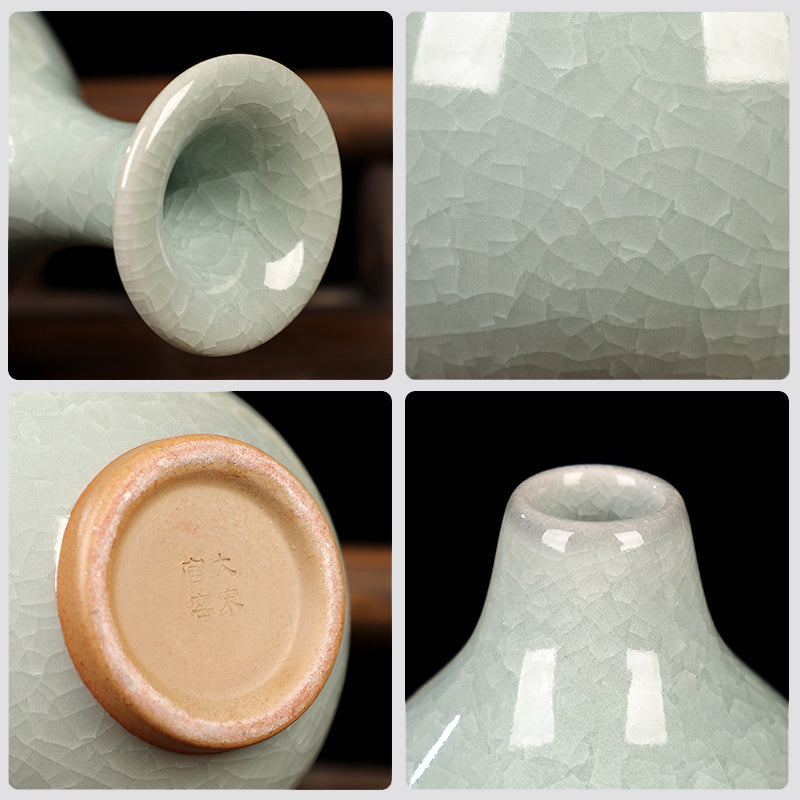Hansculture
Ice Crackle Zucchini ornament
Ice Crackle Zucchini ornament
Couldn't load pickup availability

“Ice crackle”, also known as open slice, also known as broken grain porcelain, is a variety of ancient Longquan celadon, as a special decoration of porcelain, to the Song Dynasty, the most famous products of the kilns. In the various glaze cracks in the kiln, “ice cracks” ranked first, known as the “brother kiln character, texture to take the ice cracks for the top” reputation. Because of its unique cracking in the firing process, showing the infinite natural beauty. Unfortunately, the process of firing “ice crack” was lost in the Song Dynasty. Because it was lost, and because there are very few of them. So the recovery of celadon ice cracks become a thousand years of mystery. Contemporary, Longquan, Zhejiang Ye Xiaochun after 5 years of painstaking research and development, in April 2001 will be lost for nearly a thousand years of the precious products of the kiln “ice cracks” reappeared in the world, so that the thousand years of ancient ceramics back to the color.
The success of the development of “ice crack” by the government and a number of news media attention, CCTV “into the scientific” program specially interviewed. 2004 November “celadon ice crack and its products production method” won the national invention patent (Patent No. 02120521.3); the invention of “ice crack” of the kiln to become the history of Longquan celadon to obtain the creation of the invention of the patent for the first person.
Porcelain glaze a natural cracking phenomenon. Cracking for two reasons: one is the molding of the blank mud along a certain direction extension, affecting the molecular arrangement. Secondly, the blank, glaze expansion coefficient is different, the glaze layer contraction rate is large when cooling after baking. Original porcelain firing shortcomings, but people intend to use the law of cracking to create open glaze, open glaze can be divided into two main categories in the production: a filling type, in the firing of the glaze cracks filled with soot, etc., the grain is black; can also be filled with copper sulfate in the cracks in the coloring agent, brown-green grain.
Share










